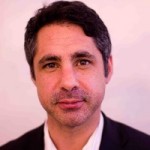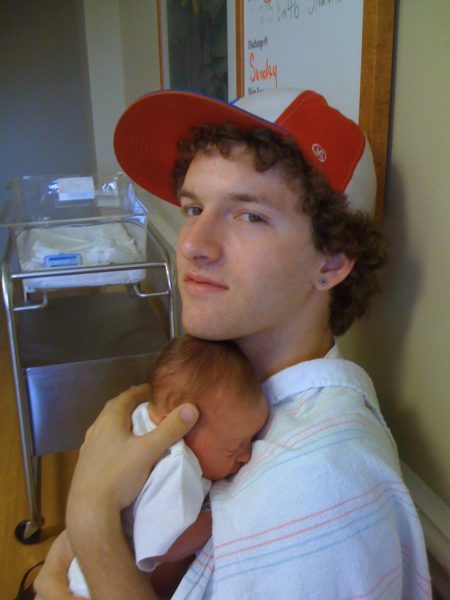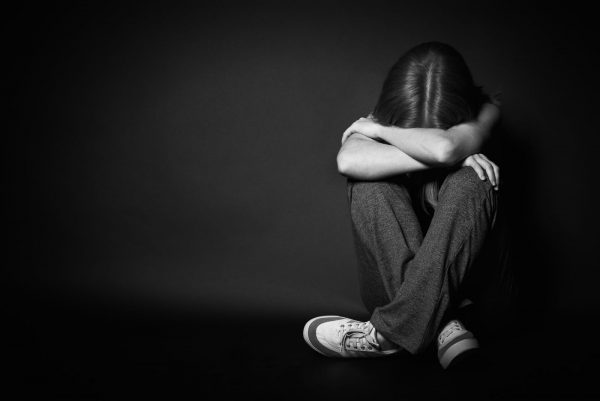Blog member, Erin-Marie, brought to my attention that I didn’t have the correct link for the theory on the Malaysian Airline incident. Oops. Silly me. I corrected it in yesterday’s post. Also, you can click HERE to access it.
Quick announcement: If you aren’t getting your email notification for new posts, please resubscribe on the homepage. For those of you who haven’t, I urge you to do so. You can also subscribe to the comments feed. Your emails will never be used, sold, or whatever they do with them that we don’t like!
Also, I’m so freaking excited about the psychokinesis class today! There will be no published recording so if you want to learn how to do cool stuff with your mind, sign up ASAP HERE. You’ll need to have a wine cork, a sewing needle, an old spoon and a disposable pie pan, so break out the Chardonnay and slurp it up!
Blog member, Sarah, posted the link to a fascinating article in the comments section. I think it’s so important that I decided to post it myself. There are so many things happening out there that follow Erik’s advice, information or predictions. I continue to be amazed. I don’t know why I still am. I should know by now that he’s the real deal. Although I’m a 100% believer, this could be the emotional remnants as a skeptic. NOTE: I DO NOT AND WILL NEVER CONDONE THE USE OF THE SUBSTANCES MENTIONED BELOW WITHOUT THE CONSENT AND CLOSE SUPERVISION OF A HEALTHCARE PRACTITIONER WELL-TRAINED IN THEIR USE.
“Some of the things I’m about to say might not make sense,” began O.M., a 22-year-old cancer survivor. He had the far-off look in his eyes that I recognized from so many of the other study participants. They sound like travelers, struggling to describe exotic foreign lands to the people left back home. That struggle is a sign that the treatment has worked. Ineffability is one of the primary criteria that define a mystical experience.
“I was outside of my body, looking at myself,” O.M. continued, “My body was lying on a stretcher in front of a hospital. I felt an incredible anxiety—the same anxiety I had felt every day since my diagnosis. Then, like a switch went on, I went from being anxious to analyzing my anxiety from the outside. I realized that nothing was actually happening to me objectively. It was real because I let it become real. And, right when I had that thought, I saw a cloud of black smoke come out of my body and float away.”
The encounter with the black smoke was just one of many experiences that O.M. had that day. As his mind, “like a rocket,” traversed vast expanses, his body never left the comfortable and well-worn couch at the Bluestone Center for Clinical Research in Midtown Manhattan. The athletic first-year medical student is one of 32 participants in a New York University study examining the hallucinogen psilocybin as a treatment for cancer-related anxiety.
For O.M., that anxiety had been crippling. Diagnosed with Hodgkin’s Lymphoma at the age of 21, the then-pre-med student at first refused to accept reality. “I’m pretty domineering,” he laughed. “I told the nurses, ‘I can’t have this right now.’ I thought I could negotiate with cancer.” That domineering spirit served O.M. well through six rounds of chemotherapy. He even looked forward, he insisted, to the debilitating side-effects of his cancer-killing infusions. Enduring them gave him a sense of agency. He could withstand the punishment; his cancer could not. Only when the treatments ended, with his cancer in remission, was O.M. consumed by a feeling of abject helplessness. The fight was over. From that day on, all he could do was wait to see whether the cancer would return.
“When I first met him, he had calluses all over his neck,” explained research manager Gabrielle Agin-Liebes. “He would constantly feel his lymph nodes as a habit, to see if they had grown. Even as he was talking to you, his hand would be up there feeling his neck. Ironically, that would make the lymph nodes swell up even more.”
“He had one of the highest ratings on the anxiety scale that we had seen: 21 out of 30,” Gabrielle continued. “To qualify for the study you only need an eight. The day after his first dosing session, he dropped to zero, and for seven months he’s stayed there. Zero anxiety.” The black cloud had carried it all away.
Psilocybin, found naturally in more than 200 species of mushrooms, has a long history of use by humans. Called “flesh of the gods” by the Aztecs, the mushrooms were widely consumed in religious ceremonies by pre-contact indigenous cultures throughout the Americas. Cave paintings in Spain and Algeria suggest ritualized ingestion dating back as far as 9,000 years. Brutally suppressed by Christian authorities on both sides of the Atlantic, indigenous psilocybin use was nearly eradicated until the late 195o’s when Western psychiatry rediscovered it.
In the years after World War II, hallucinogen-aided therapy was a rapidly growing field. Conditions as diverse as alcoholism, drug addiction, post-traumatic stress disorder, and anxiety were treated. In the quarter century that followed, 40,000 patients were given psilocybin and other hallucinogens such as DMT, LSD, and mescaline. More than 1000 research papers were produced. The results were very promising, though as the NYU study’s principal investigator Dr. Stephen Ross explained, much of the research lacked proper oversight. “They didn’t understand set and setting in the beginning. Patients would be injected with LSD, put in restraints, and somebody would come back hours later. They were put in very drab clinical environments. Then you had people like Timothy Leary and his group over at Harvard who were using the drugs themselves, using them with famous people, and recklessly promoting psychedelics within American culture.
” The government soon took notice. As paranoia grew within the Nixon Administration over the rise of a drug-fueled counterculture, regulation became a priority. Creeping legislation culminated in the Controlled Substances Act of 1970. The law created five schedules of increasing severity under which drugs were to be classified. Psilocybin was rushed into the most restrictive Schedule I, alongside MDMA, marijuana, and heroin. The classification was reserved for drugs that, by definition, have a “high potential for abuse,” “no currently accepted medical use,” and a “lack of accepted safety.” The act signaled the end of psychedelics research in America for nearly 25 years.
Dr. Stephen Ross The research made a slow comeback starting in the mid-90’s, but the stigma remains. “The only thing I learned about psychedelics in psychiatry training is that they were toxic,” Dr. Ross explained. “We were told that they cause psychosis. I’d also heard the old urban legends: that they cause chromosomal damage, and that if you take seven hits of LSD you go insane. But, I knew nothing about their history in psychology and in mental health, which had been considerable.
” The soft-spoken psychiatrist first came to NYU under a fellowship to do research on drug addiction. In his search for novel treatments for intractable conditions, Ross stumbled upon a decades-old study in which LSD had been used to successfully cure alcoholism. “I was shocked,” he admitted. “As a Schedule I drug, I assumed that LSD must be very addictive. But that simply wasn’t true. It does not behave like an addictive drug by any measure. I was even more shocked to find out that Bill Wilson, the founder of Alcoholics Anonymous, got sober from a psychedelics-induced mystical experience. He was so impressed that he actually wanted to introduce it into the bylaws of AA.”
As for the toxicity Dr. Ross had been warned about in medical school, “There are simply no known long-term toxic effects from taking serotonergic hallucinogens,” he explained. “From a medical perspective, psilocybin is a remarkably safe compound.”
The Drug Enforcement Agency takes a different view. As a condition of Dr. Ross’s Schedule I license, the compound is stored in a restricted area inside a two ton safe. “It’s the only drug in the safe,” Dr. Ross elaborated, “and Monday through Friday, we take the drug out once a day and weigh it. Three people have to sign off on it.” That security is a stark reminder that distribution of psilocybin without a DEA license is a federal crime carrying penalties of up to 20 years in prison for a first offense.
The intense scrutiny has produced a rigorous methodology. The NYU team screens every applicant for personal and family mental illness, health conditions, and substance abuse history. “We’ve had to be perfect,” Dr. Ross concluded. Additionally, each patient participates in months of intensive psychotherapy before and after treatment. “They undergo an extensive review of their life,” Dr. Ross explained. “The goal is to try to construct a new narrative around cancer.”
An important part of that narrative is death. “We don’t die well in America,” co-principal investigator and palliative care specialist Dr. Anthony Bossis explained. “It’s the most taboo conversation in medicine. I think for much of healthcare, it represents a failure on the part of the provider. Most people die in ICUs with tubes throughout their bodies and not in a spiritual state.”
“Our patients come in with a kind of demoralization syndrome reminiscent of post-traumatic stress disorder,” co-principal investigator Dr. Jeffrey Guss added. “Cancer for them is an enormous existential crisis. Life becomes nothing but, ‘my chemo, my radiation, my cancer numbers.’ Life outside of cancer shrinks. They’re petrified by death. They become immobilized. The whole point is to dislodge them from that. What’s remarkable is that even though we don’t tell them what narratives to form, there is an enormous commonality. Patients will come to me and say, ‘I understand intuitively now that love is truly the most important force on the planet. I experienced a profound sense of peace that I never felt before and it has stayed with me. I know now that my consciousness is bigger than me.’”
Dr. Bossis sees a spiritual implication. “Those concepts form the basis for so many religions: Christ-consciousness, Buddha-nature, Samadi in Hindu, Satori in Zen… There’s all this overlap. They speak the words of the mystics without ever having read them.”
Still, the experiences are not all positive. Many sensations are deeply troubling. Patients have reported bouts of intense anxiety, frightening imagery, or even the temporary belief that they have died. “Psilocybin is not an agent of universal good,” explained the study’s administrative director Alexander Belser. “It acts as a remarkable amplifier of things. It amplifies the good and the bad. We have done everything in the course of this study to create a context that brings out the good. We spent a lot of time choosing who the therapists would be. We spent a lot of time thinking about how to develop rapport and trust. We spent a lot of time on the room.”
The room at Bluestone is warm and inviting. An abstract painting of soft cloudy pastels hangs on the wall. Stone mushrooms, tribal artifacts, and fresh flowers decorate the space. The patients arrive at 9am on the day of their dosing session. To help them feel at home, they are invited to bring a few personal items: photographs of family and friends, stuffed animals, or religious paraphernalia. They are welcomed at the door by a team of two therapists who will not leave their side for the next eight hours—a full psychedelic work day.
Crucially, each participant is shown the two medications they will have access to on demand throughout their trip. One is Valium, used to reduce anxiety, and the other is Zyprexa, an almost instantaneous antidote to the psychedelic. In a testament to the thorough mental preparation the study provides, the medications have never been requested by any of the patients. The psilocybin itself is presented in pill-form inside a ceramic chalice.
The therapists and the patient perform a ritual in which the intention for the day is set and ropes are bound together, signifying everyone’s interconnectedness. The subject is directed to don an eye mask and headset and to lie on the couch. The headset plays six hours of rhythmic wordless music from around the world. The music is one more nod to the ancient shamanic traditions that the research team has borrowed from.
What happens next is unique for every patient. O.M. traveled halfway around the world to embrace the family he left behind in his native country. He traveled inside of his own neck to see that the swollen lymph nodes he had hated so intensely were actually filled with clear, benign fluid. Hate turned to love when he realized that they were a part of him. D.B., a life-long atheist grasping for words, felt bathed in what she could only describe as “God’s love.” Estalyn Walcoff, a white woman, stained her mask with tears as she viscerally felt the pain of hundreds of years of slavery and “the interconnectedness that runs through us all.”
“It was the first time since I’ve been sick that I came to terms with what my body was. I said ‘This is my body and I choose to take it as my vehicle in this life.'” Nick Fernandez entered a cave. “I’m outside of my body,” he recalled nearly a year after it happened, with a “realer than real” immediacy that still could only be expressed in present tense. “My body is on a clothing hanger. I’m walking around it, looking at it, deciding if I want to choose it or not. I’m thinking about my body in terms of all the people my body has ever had sex with, all the food that’s ever gone into it, all the chemotherapy, all the exercise, all the shit that’s ever come out of it. I pictured my parents conceiving me, making this body. Everything I can imagine that’s happened to this body in 26 years, I saw. It’s like when you shop for a new car and they say it has 30,000 miles, and was in this crash, and this happened to it. And, I was outside of this body walking around it thinking, ‘Should I get this body or not?’ I eventually decided that I would. And, when I entered into my body, honestly, I felt like a superhero putting on his suit for the first time. It was the first time since I’ve been sick that I came to terms with what my body was. It wasn’t this thing that I wanted to be better, that I wished didn’t have cancer. I said, ‘This is my body and I choose to take it as my vehicle in this life.’ And, I think the message is, that you don’t get to choose. This is what you get. Use it well.” Nearly a year later, Nick still thinks about that message every day.
The data from the study is still being analyzed, but anecdotally Dr. Ross and his team report that the vast majority of their patients have exhibited an immediate and sustained reduction in anxiety. Consistent with similar studies involving psilocybin, approximately three-fourths of the participants rate their experience with the drug as being one of the top five most significant events of their lives.
I asked Dr. Ross how a medication taken only once can have such an enduring effect. “One way to think of it,” he replied, “is that these experiences are profoundly memorable. When something really bad happens, PTSD can occur. It activates the amygdala where emotional memories are formed. Symptoms can last for years. Dramatic negative events can create symptoms for long period of time, and it seems that way with very positive experiences too. In my own life, I think about the birth of my kids. It was a profound event that caused great changes in my life. I think these psychedelic events are similar to that.”
I sat across the table from O.M., examining his perfectly normal neck. He smiled as he demonstrated the way he used to palpate his lymph nodes – fingers curling expertly into position behind his left ear like those of a virtuoso violinist. “Now, in medical school, I’m learning to palpate other people’s lymph nodes,” he added. “I’m the best.”
His hands dropped easily back onto the table, resting peacefully there before him. It was hard to imagine that this man had ever been sick.
“At the hospital they gave me Xanax for anxiety,” he said. “Xanax doesn’t get rid of your anxiety. Xanax tells you not to feel it for awhile until it stops working and you take the next pill. The beauty of psilocybin is: it’s not medication. You’re not taking it and it solves your problem. You take it and you solve your problem yourself.”
Credits: The Atlantic, journalist Roc Morin
It’s a shame that the government has such a tight hold on us and that their actions are based on reactions without thorough research and reflection.




